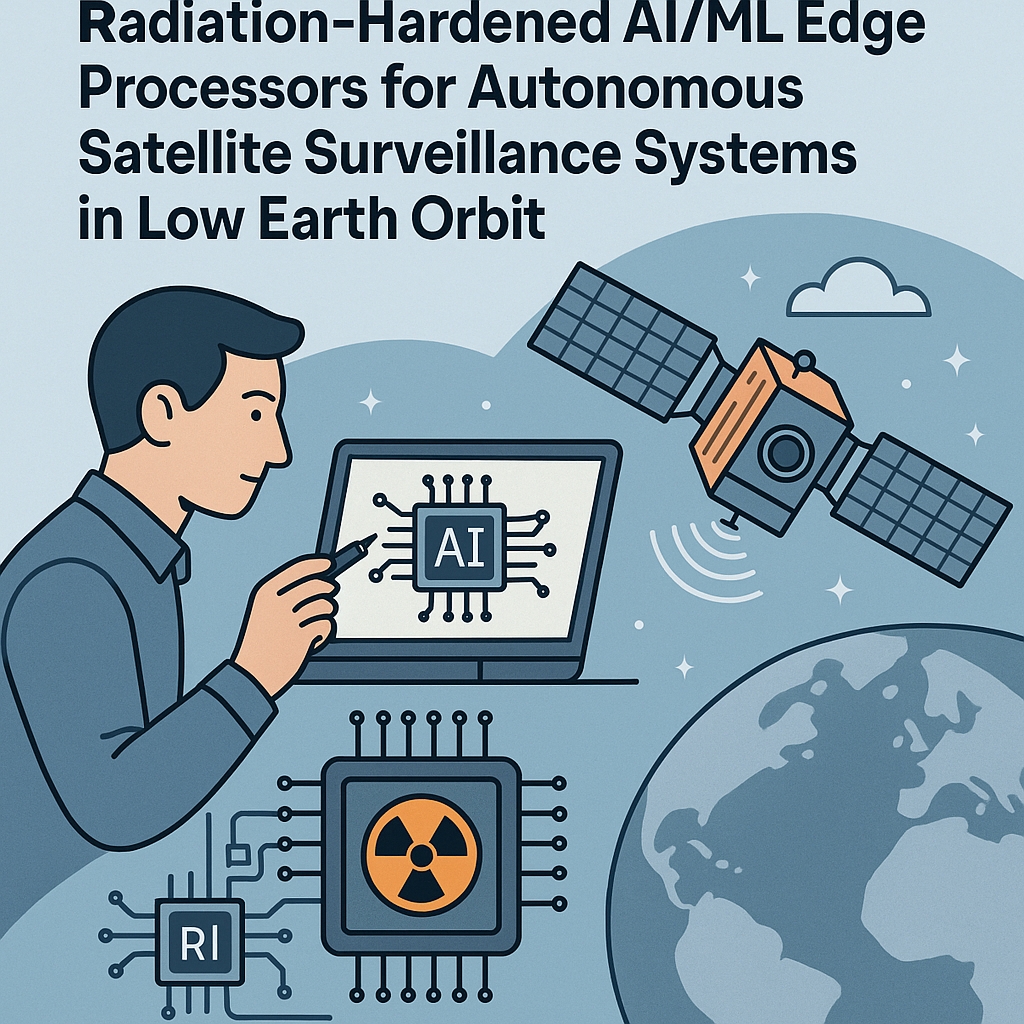Introduction
In the rapidly evolving field of space technology, the integration of artificial intelligence (AI) and machine learning (ML) into satellite systems has opened up new possibilities for autonomous operations. However, when designing edge processors for these applications, particularly in low Earth orbit (LEO) environments, one must consider the harsh conditions that can impact performance. This blog post explores the challenges and solutions in designing radiation-hardened AI/ML edge processors specifically for autonomous satellite surveillance systems.
Understanding the Environment in Low Earth Orbit
Low Earth orbit presents several unique challenges for satellite systems, including:
- Radiation Exposure: Satellites in LEO are exposed to higher levels of cosmic radiation, which can cause damage to electronic components.
- Thermal Variability: The temperature can fluctuate dramatically, impacting hardware performance and longevity.
- Microgravity Effects: Operations in a microgravity environment can affect the behavior of various materials and systems.
Importance of Radiation Hardening
Radiation hardening is critical for ensuring the reliability and longevity of satellite systems. The main objectives of radiation hardening include:
- Reducing Single Event Upsets (SEUs): These are momentary disturbances caused by high-energy particles that can flip the state of a bit in a processor.
- Enhancing Total Ionizing Dose (TID) Resilience: Prolonged exposure to radiation can degrade electronic components over time.
- Improving System Redundancy: Implementing redundant systems can help mitigate the risks associated with radiation-induced failures.
Design Considerations for AI/ML Edge Processors
When designing AI/ML edge processors for autonomous satellite surveillance, several key considerations must be taken into account:
1. Hardware Architecture
Choosing the right hardware architecture is vital for performance and resilience:
- FPGA and ASIC Integration: Utilizing field-programmable gate arrays (FPGAs) and application-specific integrated circuits (ASICs) can provide flexibility and efficiency.
- Redundant Processing Units: Incorporating multiple processing units can allow for redundant operations in case one unit fails.
2. Software Optimization
Software plays a crucial role in maximizing the efficiency of AI/ML algorithms:
- Algorithm Selection: Choosing robust algorithms that can function well under variable conditions is essential.
- Real-Time Processing Capabilities: Ensuring that algorithms can process data in real time is crucial for effective satellite surveillance.
3. Thermal Management
Effective thermal management strategies are necessary to cope with extreme temperature variations:
- Active Cooling Solutions: Implementing cooling systems can help maintain optimal operating temperatures.
- Material Selection: Using materials that can withstand high temperatures and radiation is vital for hardware durability.
Implementing AI/ML for Autonomous Surveillance
The integration of AI/ML technologies enhances the capabilities of autonomous satellite surveillance systems:
- Data Analytics: AI algorithms can analyze vast amounts of data from satellite sensors to identify patterns and anomalies.
- Decision-Making: ML models can enable autonomous decision-making, allowing satellites to adjust their operations based on real-time data.
- Predictive Maintenance: AI can predict potential system failures, allowing for proactive maintenance and reducing downtime.
Challenges in Implementation
Despite the advantages, there are several challenges in implementing AI/ML edge processors for autonomous satellite systems:
- Data Privacy and Security: Ensuring that sensitive data collected by satellites remains secure from potential threats is crucial.
- Resource Constraints: Limited power and processing capabilities in space require highly efficient algorithms and systems.
- Regulatory Compliance: Adhering to international regulations and standards for satellite operations can be complex.
Conclusion
Designing radiation-hardened AI/ML edge processors for autonomous satellite surveillance systems in low Earth orbit is a multifaceted challenge that requires careful consideration of hardware, software, and environmental factors. By addressing the unique challenges of radiation exposure, thermal variability, and microgravity effects, engineers can develop robust systems capable of enhancing autonomous operations in space. As technology continues to evolve, the potential applications of AI and ML in satellite systems will expand, paving the way for more efficient and effective surveillance solutions.



